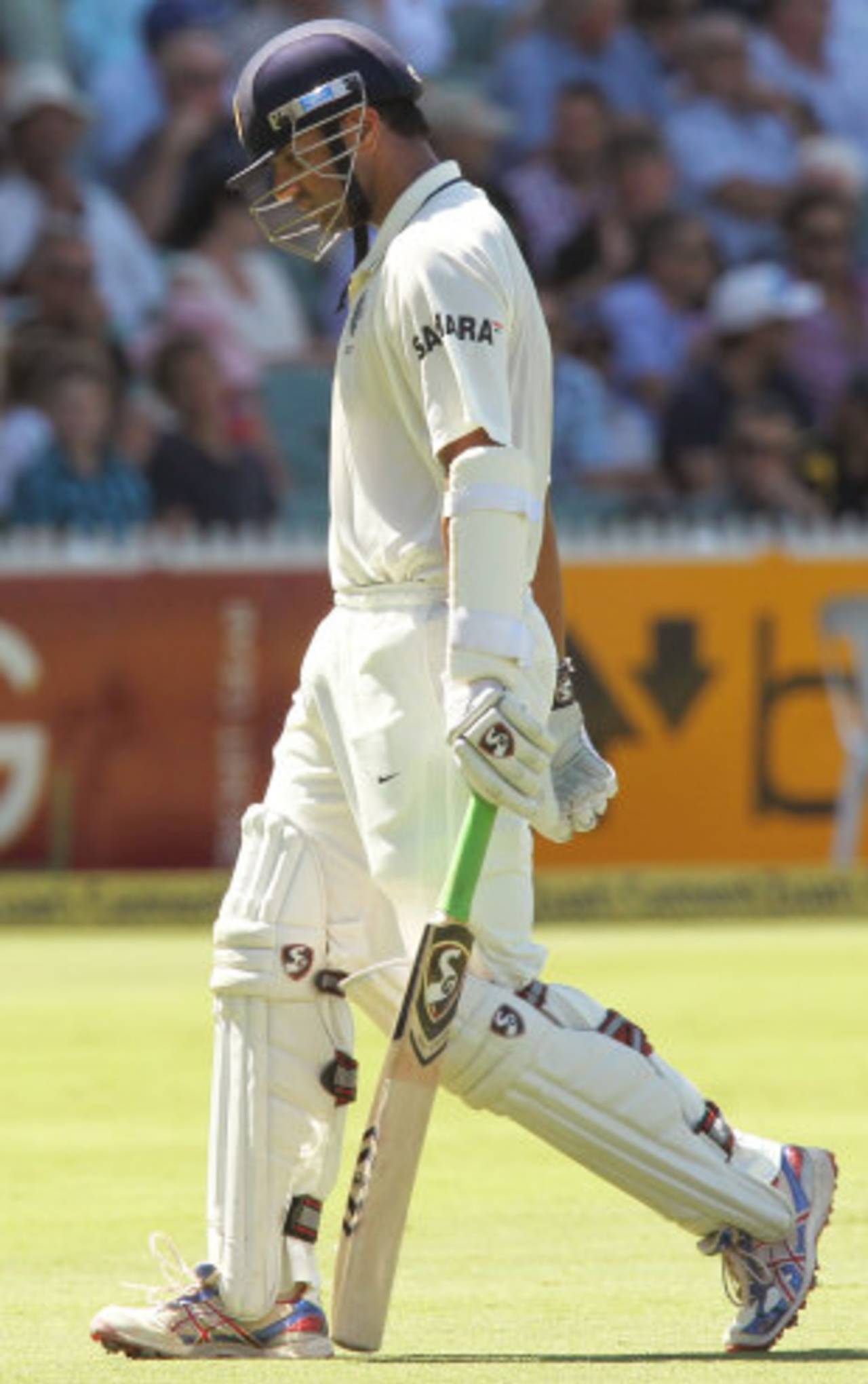In the end it was so sad it was funny. With less than three overs to go in the day's play, VVS Laxman fell to a long hop, and walked off stunned. Out came Ishant Sharma, a nightwatchman for No. 7 Wriddhiman Saha. Virat Kohli, India's best batsman on the tour, and not used to trusting the lower order, understandably forgot the purpose of a nightwatchman, and instead began to shield Ishant. In doing so, he ran himself out on the last ball of the penultimate over, trying to steal a single.
It was funny because it happened on a day batsmen were falling to full tosses and long hops. It was instructive because it laid bare the mental state the team is in. It was sad because throughout the eight innings of a series where the batsmen have underperformed, consigning Ishant to nightwatchman duties has been the only change India have brought to their batting order.
It is baffling enough that the batting personnel have continued unchanged - it still is consistent with India's traditional ways however incorrect it sounds - but previous captains and previous teams have played around with the batting order to try to break the hold of the opposition bowlers in tough times. India's 10 years of good Test cricket have been replete with occasions when VVS Laxman has been promoted to No. 3 to do something different. India have made those decisions at times in the middle of a series, at times in the middle of a match, and sometimes before the start of a series.
They did so famously
in Kolkata in 2000-01 under Sourav Ganguly and John Wright. On a beast of a turner
in Mumbai in 2003-04, the team of Rahul Dravid and Wright once again promoted Laxman to reap a gem again. Anil Kumble, forced in part by the decision to open with Dravid, asked Laxman to bat at 3 on the last trip to Australia with good results. Kumble and Gary Kirsten did the same when India could read Mendis and Murali in Sri Lanka in 2008, although it didn't work this time.
In Australia, though, the Indian batsmen have been failing innings after innings all series in almost the same manner, but there seems to be no effort to shake things up. Innings after innings we have spent hoping for the sight of Laxman or Virat Kohli - who incidentally finds himself in a state similar to what Laxman did in 1999-2000 - walking out at the fall of the first wicket, but India have been set in their ways. The Australian bowlers have not been forced to change their pre-series plans at all.
If the ways with the Indian team management have been so set, perish the thought of sending in Virender Sehwag, so clearly struggling against new moving ball, in the middle order to perhaps better use him. And at any rate, even if you are going to be stubborn, it didn't make much sense in leaving a young Kohli stranded with the tail so often.
It is perhaps unfair on Dravid to ask him to open yet again. It is possible the captains might have felt it disrespectful to demote him. That, though, is not close to reality. Had they changed the batting order, it would have been a desperate move. And these have been desperate times. That was the successful Indian team's hallmark: they found a way. You are losing, you are losing consistently, you change things up. You try to break the rhythm. Sometimes you need to do desperate things.
Because promoting Laxman has worked in the past, it was surprising to hear from MS Dhoni after Perth that until then India had never given a thought to changing the batting order in their six previous failures at all. That rules out the reluctance of any of the batsmen to bat out of their comfort zones. Forget the batting order, which is less fluid than bowling changes, India introduced Ishant in Perth after Umesh Yadav had been introduced, taken off, and brought back again to bowl to a rampaging David Warner. Dhoni's reasoning was that they did so because Ishant is not a swing bowler. Because of that stubbornness Ishant came on to bowl when Australia had reached 0 for 89, and Zaheer Khan had gone for 44 in his six overs.
In Adelaide, although as defensive as Dhoni, Sehwag at least juggled better with the bowlers. R Ashwin was brought in as early as the fourth over, albeit on a track that was closest to what you get in India, and the results were there. This is not to say that India would have won the series or lost fewer Tests had they changed the batting order. Nor is this to suggest that Laxman would have scored a century from No. 3 or Kohli would have scored more than he has from No. 6 or Dravid or Sehwag would have found form batting lower than they have been doing. However, by doing so, India would have shown desperation at the most desperate of times as opposed to going through the motions as props in a play that was almost certain to go down this path ever since they were bowled out for 191 on the first day in Sydney.
Sidharth Monga is an assistant editor at ESPNcricinfo
